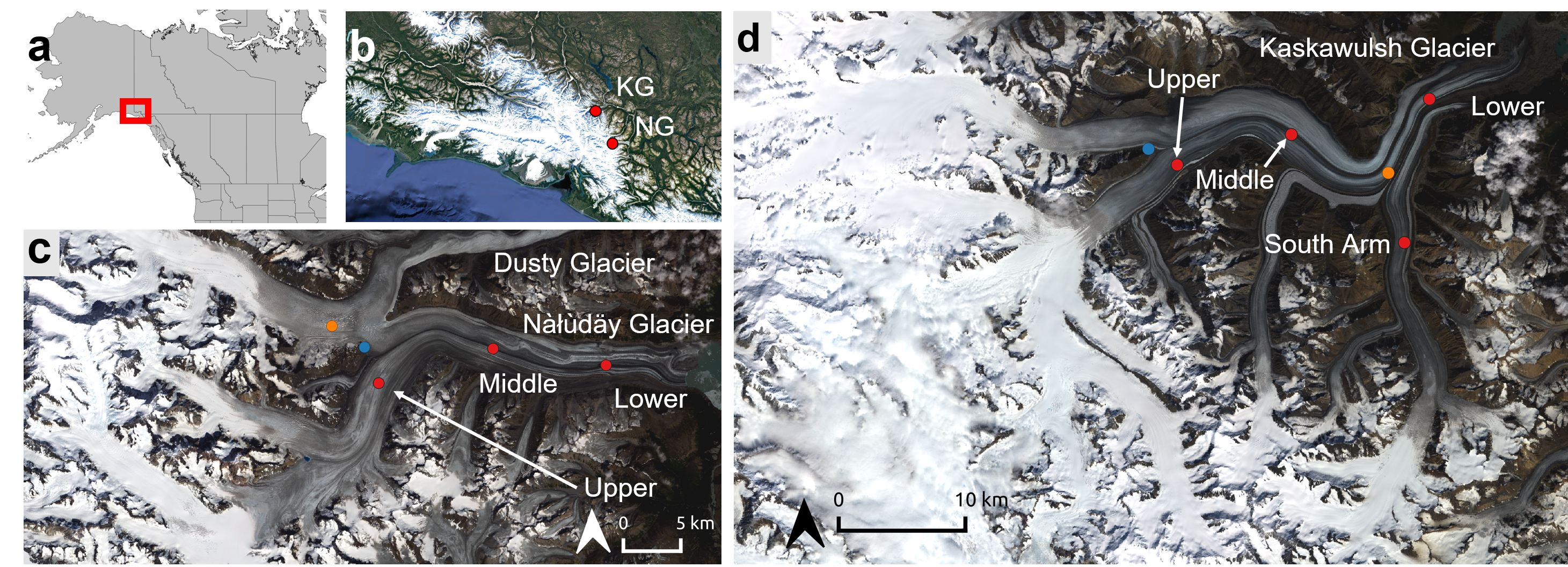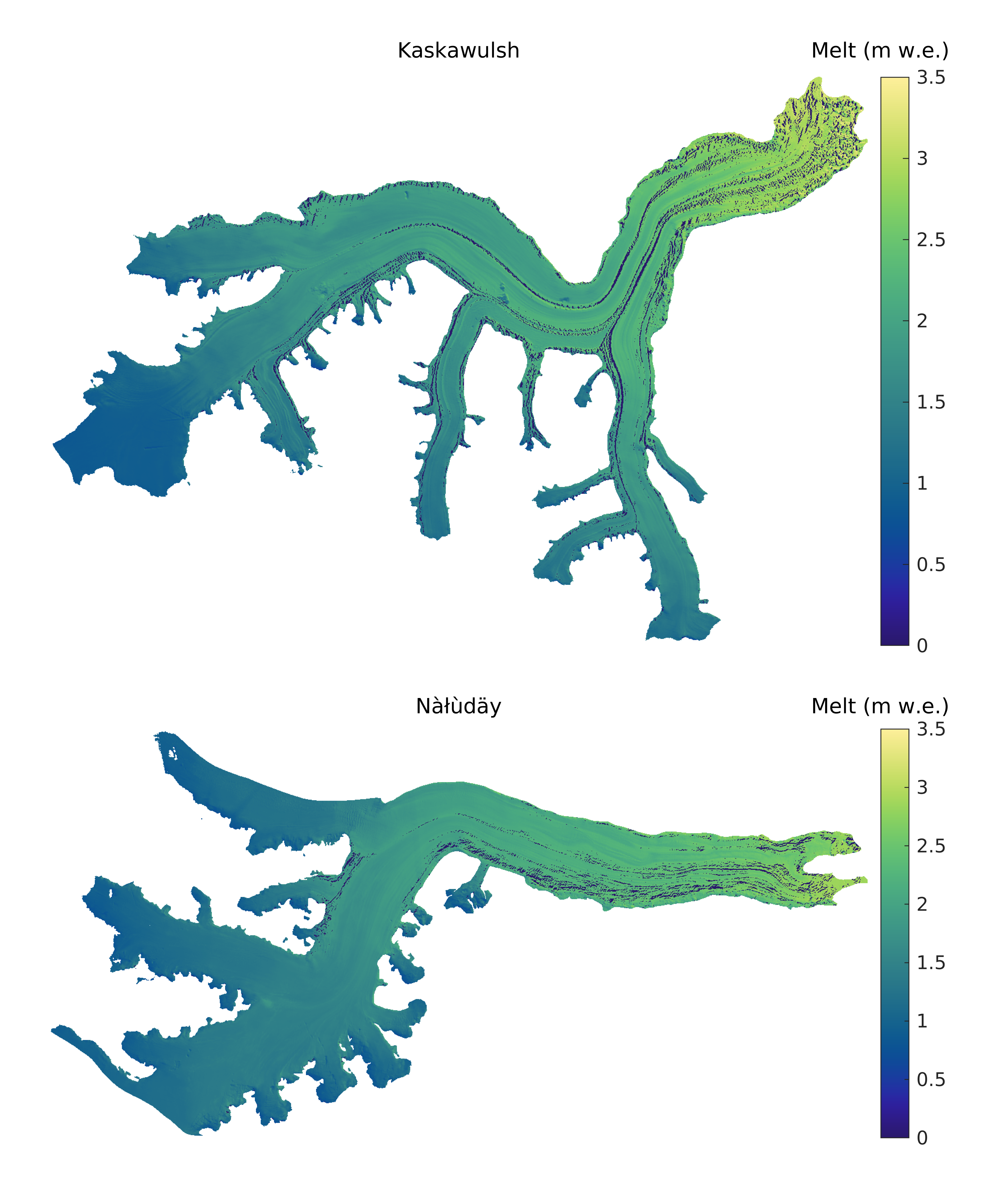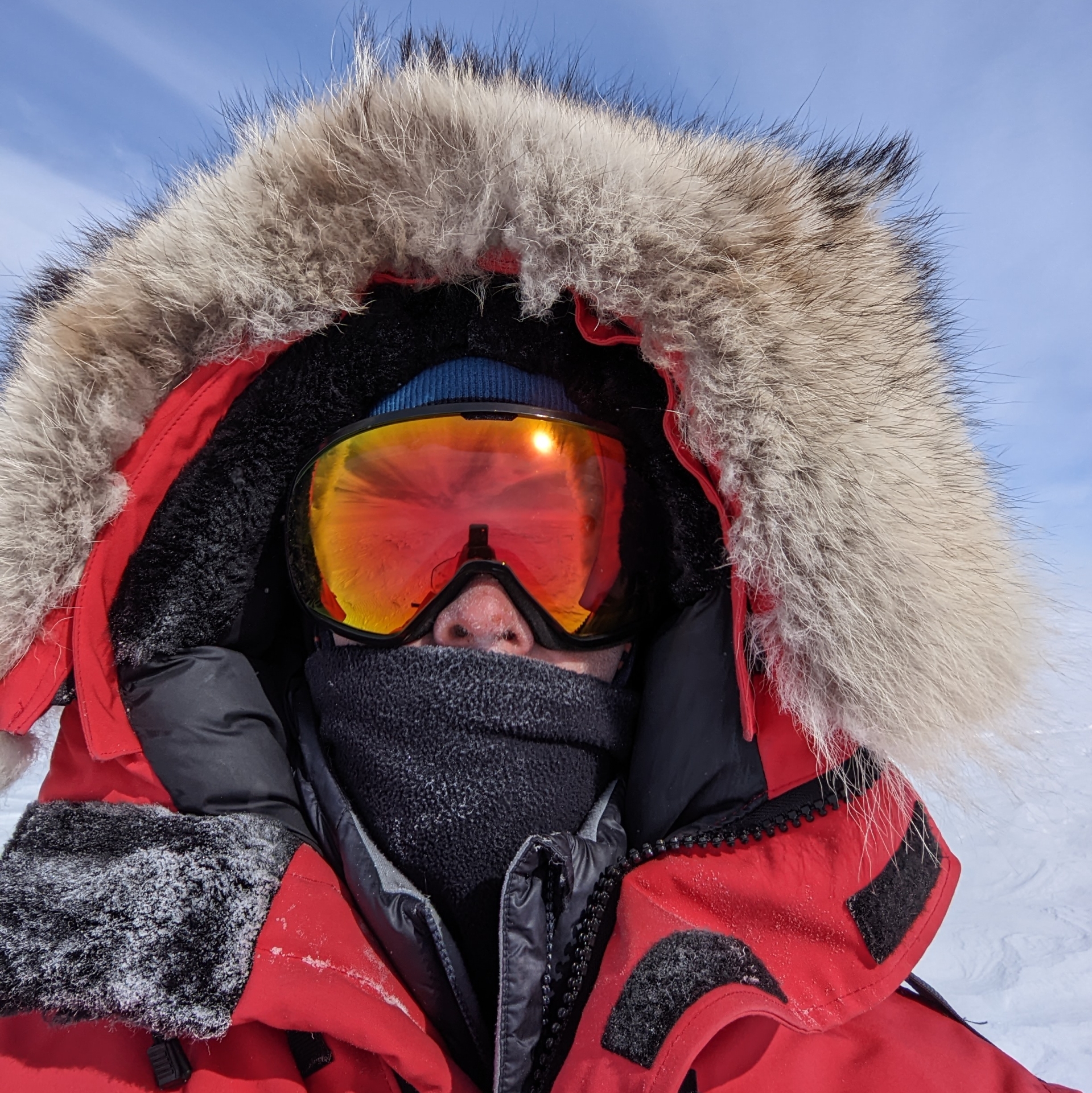Surface energy balance modelling
Glacier melt rates are important because they determine runoff volumes, control mass balance, and (indirectly) drive dynamic changes. These factors impact things like total catchment runoff, downstream biogeochemistry, water resource availability, recreation and economic oppourtunities, and natural hazards. Mass balance and dynamic changes impact sea level rise, particular on the Greenland Ice Sheet.
I am mostly interested in predicting glacier melt as an input to a surface water routing model. This means the melt model needs to capture the total volume and the spatial distribution of melt.
Our paper, Application of an improved surface energy balance model to two large valley glaciers in the St. Elias Mountains, Yukon, describes our energy balance model approach and applies the model to Kaskawulsh and Nàłùdäy Glaciers in the St. Elias Mountains, Yukon. The code is available on GitHub.
 The study area for application of the energy balance model.
The study area for application of the energy balance model.
 Predicted surface melt from 27 July to 15 September 2018.
Predicted surface melt from 27 July to 15 September 2018.
Citation
Hill, T., Dow, C. F., Bash, E. A., and Copland, L. (2021) Application of an improved surface energy balance model to two large valley glaciers in the St. Elias Mountains, Yukon. Journal of Glaciology. 67(262), 297-312. doi:10.1017/jog.2020.106
